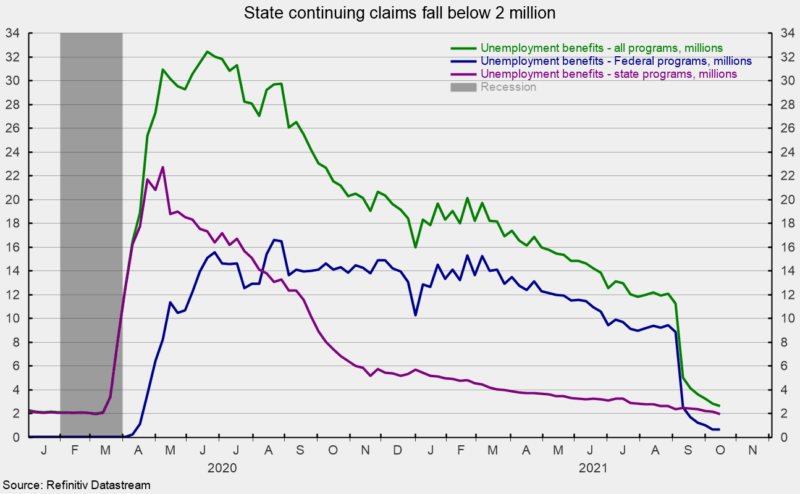Initial claims for regular state unemployment insurance fell to 269,000 for the week ending October 30, a drop of 14,000 from the previous week’s tally of 283,000 (see first chart). The latest data is the fifth drop in a row, the eleventh decline in the last fifteen weeks; it is also the fourth in a row below 300,000. The last time initial claims posted four consecutive weeks below 300,000 was February-March 2020.
The four-week average fell for a fourth consecutive week, coming in at 284,750, the lowest level of the recovery. Initial claims for unemployment benefits are approaching their pre-pandemic level of 212,000, the average for January and February 2020.
The number of ongoing claims for state unemployment programs totaled 1.981 million for the week ending October 16, a drop of 180,483 from the prior week. The latest result is the fifth decline in a row and the twelfth in the last fourteen weeks. Before the pandemic, state continuing claims were just over 2 million (see second chart).
Continuing claims in all federal programs totaled 692,333 for the week ending October 16, a rise of 22,752. The Extended Benefits, Pandemic Unemployment Assistance, and Pandemic Emergency Unemployment Compensation programs are all trending lower as these programs wind down (see second chart).
The latest results for the combined Federal and state programs put the total number of people claiming benefits in all unemployment programs, including all emergency programs, at 2.673 million for the week ended October 16, a fall of 157,731 from the prior week (see second chart).
Initial claims are again trending lower as new Covid cases slow. Overall, the labor market remains tight, and labor shortages, along with materials shortages and logistical issues, are restraining supply across the economy, driving up prices. Eventually, supply will rise to meet demand but in the interim, risks to the economy remain elevated.




